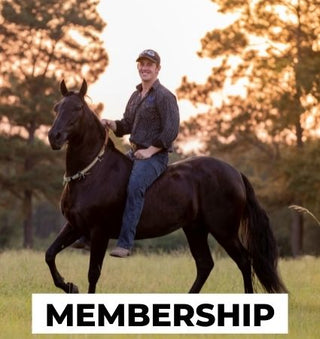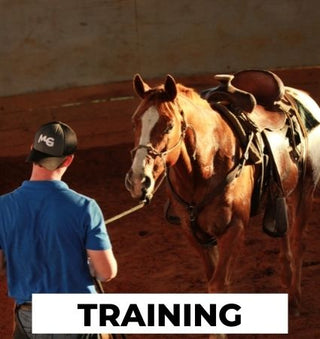Today we are talking about riding the eye and learning how to ride a bucking horse.
Watch The Video Here Or Continue Reading Below!
INRODUCTION TO RIDING THE EYE
Hey, everyone! It's Michael Gascon, The Horse Guru, and I'm here today to address a common concern among horse riders—dealing with a horse that loves to buck or kick out. Today, we're going to dive into a technique I like to call "riding the eye" to help you safely manage and control your horse's behavior in the saddle.
The Foundation: Willingness To Give
Before we even mount our horses, it's crucial to ensure they are willing to give their face from the ground. By gently touching the horse's belly, we encourage them to be responsive and set the stage for a smoother ride. This is especially important because we'll be relying on our ability to control the horse's head to prevent bucking.
ADDRESSING BUCKING FROM THE GROUND
When addressing a horse that likes to buck, it's essential to perform ground checks to see if the horse responds well to cues. If a simple touch to the belly causes the horse to jump up and potentially drag you in, it might be a sign that the horse isn't ready for riding until it becomes more responsive and soft.
Riding The Eye Technique
Now, let's get into the core technique—riding the eye. The idea here is to gain control of the horse's head before anything else. Bucking often occurs when horses want to evade work or resist movement. By having control over the horse's head, we disrupt their desire to be in a straight line, making it difficult for them to execute a buck.
To execute riding the eye, all movements should be to the side. This includes looking down and being able to see the corner of the horse's eye. As long as the horse is off-center, they'll have a harder time bucking or running off with the rider. This off-center approach continues when mounting and throughout the ride.
Managing Movement
Whether walking, trotting, or cantering, controlling the horse's head is key. Even during stops, the rider should maintain the horse off-center. You always want to have the horse slightly bent to the inside of the arena. This technique ensures that the horse remains responsive and prevents surprises like sudden bucks or crow hops.
Encouraging Forward Movement
One major reason horses buck is to resist going forward. To counter this, we allow the horse freedom to move forward but maintain control over their head, with a slight bend to the inside. This not only addresses bucking but also encourages a more relaxed and forward-moving horse.
Transitioning To The Canter
While many horses might want to buck into the canter due to excessive rein pressure, allowing the horse to move freely forward and stretch out can lead to a more relaxed canter. The goal is to let the horse offer the canter willingly instead of forcing it.
STEERING CONTROL
Maintaining control over the horse's head facilitates steering. By turning the head, the rider can guide the horse's shoulders and hindquarters, making it easier to maneuver in various directions.
Conclusion Of Riding The Eye
In the world of horse riding, controlling the head means controlling the horse. Riding the eye is an effective technique for dealing with bucking horses, providing riders with the tools to guide and manage their horses safely. With consistent practice, you'll find that your horse becomes more responsive, making rides smoother and more enjoyable.
Thanks for joining me today on this journey of horsemanship. Stay tuned for more tips and techniques, and I'll see you in the next video!
Check out more free training resources HERE!









